This post contains affiliate links (I get a commission at no extra cost to you for purchases made through links in this post).
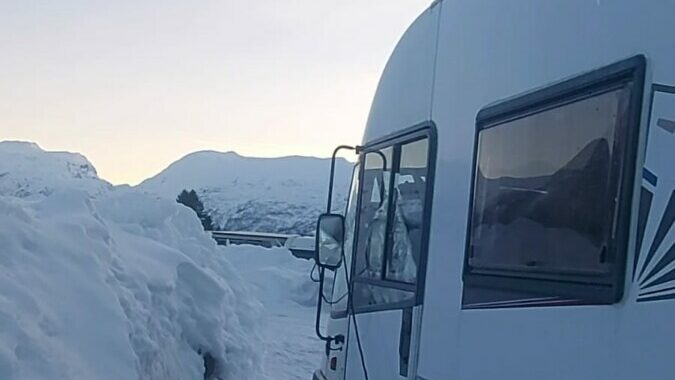
In this article, I will explain how I keep my motorhome warm during the winter, and I will include nine tips on how you can make your motorhome, RV, or caravan warmer in winter.
Using the original heater/furnace in my motorhome that runs on propane, I have kept my RV warm for a whole Norwegian winter, even though it is poorly insulated and made in 1996. Other options are using a diesel heater or electric heater; the electric option might not be sufficient as it gets colder.
It isn’t as challenging to keep a motorhome, RV, or caravan warm during a cold winter as many people might think. Still, you have different options for doing so and lots of tricks to learn to make winter camping enjoyable and your motorhome toasty on cold nights.
What Is The Best Way To Heat a Motorhome, RV, or Caravan In Winter?
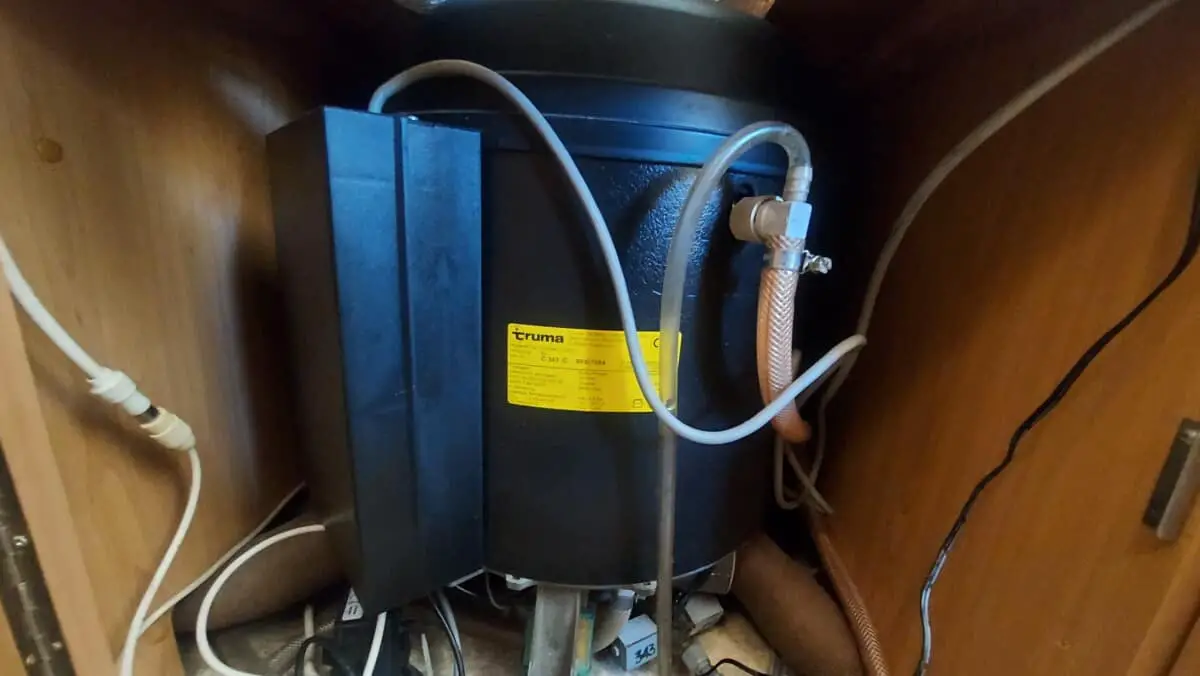
The best way to heat a motorhome, RV, or caravan in the winter is by using its original heater; since this ensures even distribution of the heat and heats areas where the water system and pipes are, it also keeps those from freezing. In most cases, you get a better effect using propane or diesel vs. electricity.
The reason why propane or diesel commonly is more effective we can see clearly at the specifications of truma combi heaters where they can reach 6000 watts of rated heat output on propane or diesel VS 1800 watts on electricity. In some cases, you can run the heater on propane or diesel and electricity simultaneously as an extra boost, increasing the heat output to a maximum of 6900 watts.
In a real-life example, my truma propane heater has a maximum rated heat output of 3600 watts. I have never needed to use it on max, even at -20 C (-4F), and that’s with a motorhome from 1996 that isn’t winterized. Still, I have given it some extra love in the shape of an additional insulated floor and some insulation covers for the windshield, but not more.
It costs me around 300 USD/month to heat my motorhome. To figure out how much it will cost you to heat a motorhome, RV, or caravan during winter at different temperatures either with propane, diesel, or electricity, I have covered that in another article, so you won’t have to get shocked the first time you go winter camping.
You can be sure that there is a way to keep motorhomes nice and warm even during harsh winters.
NEVER Only Use a Space Heater In RV Below FREEZING -Here Is Why
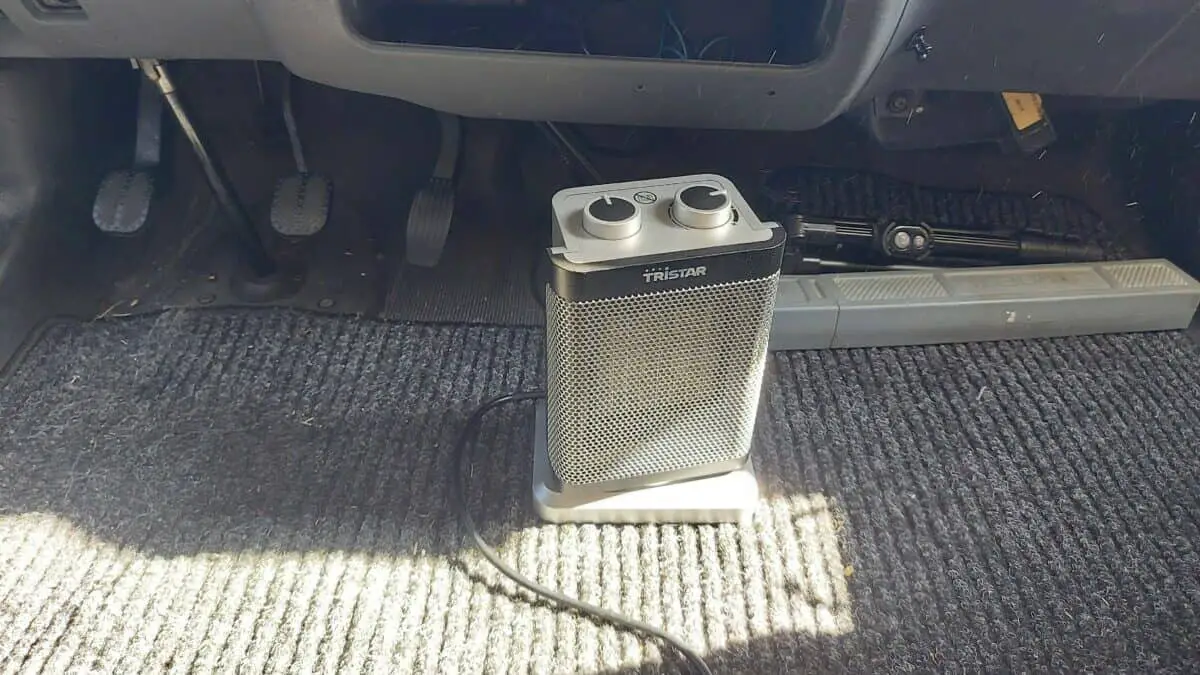
If you only use a space heater to heat your motorhome, RV, or caravan, when temperatures drop below freezing, your water system will freeze; for this reason, always run your original heater/furnace that will ventilate and spread the warm air into all the small areas a space heater won’t reach.
To learn more about your water system and if your water pipes can freeze during the night, check out my other article where I cover that subject and share my experience from a winter in Norway where some of my water pipes froze.
When temperatures are above freezing, you are not at risk of frozen water pipes or tanks; you could turn off your original heater and only run a space heater if you want. This could be advantageous if you have cheap electricity and your original heater can’t run off electricity.
Another way to use a space heater in a motorhome, RV, or caravan is in combination with your original heater, as long as you ensure that your original heater runs enough to keep the whole water system in working order.
If you do that, I would recommend putting the space heater in a cold area of your motorhome, such as in between the front seats or somewhere in the front of the motorhome, since this is one of the parts that is insulated the least and the original heater or furnace usually dont get so much heat up there since it can be quite far away from the heater.
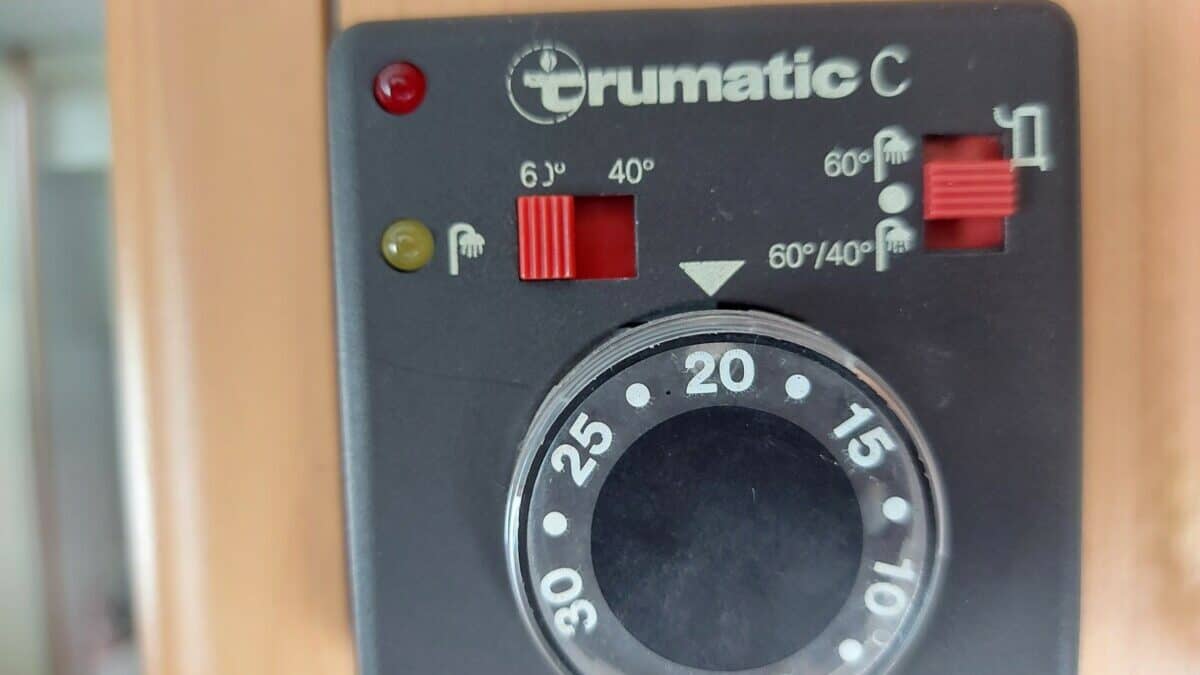
By doing that, you won’t mess too much with the temperature control setting for the original heater either; since your furnace turns on and off depending on what temperature you choose to put it on, it measures this temperature in the middle of the living area. If you put a space heater right at this thermometer, the original heater won’t run because it senses that the motorhome is already warm.
Place the space heater where it won’t mess with your furnace temperature controls too much!
9 TIPS How to Keep a Motorhome (RV) WARMER in WINTER
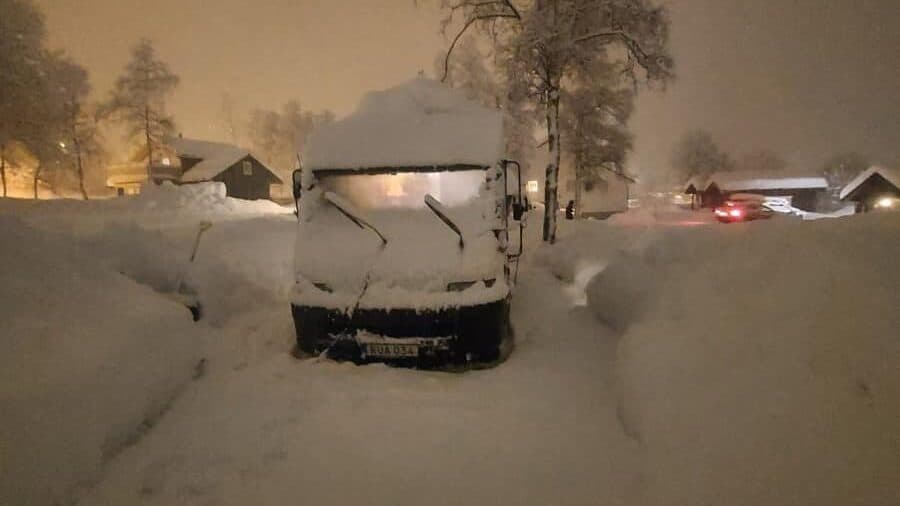
1. ALWAYS use your original heater:
Or one that spreads out the heat with the same efficiency via the air ventilation holes to keep your whole vehicle and its functions from freezing, especially the water system.
2. Use propane or diesel:
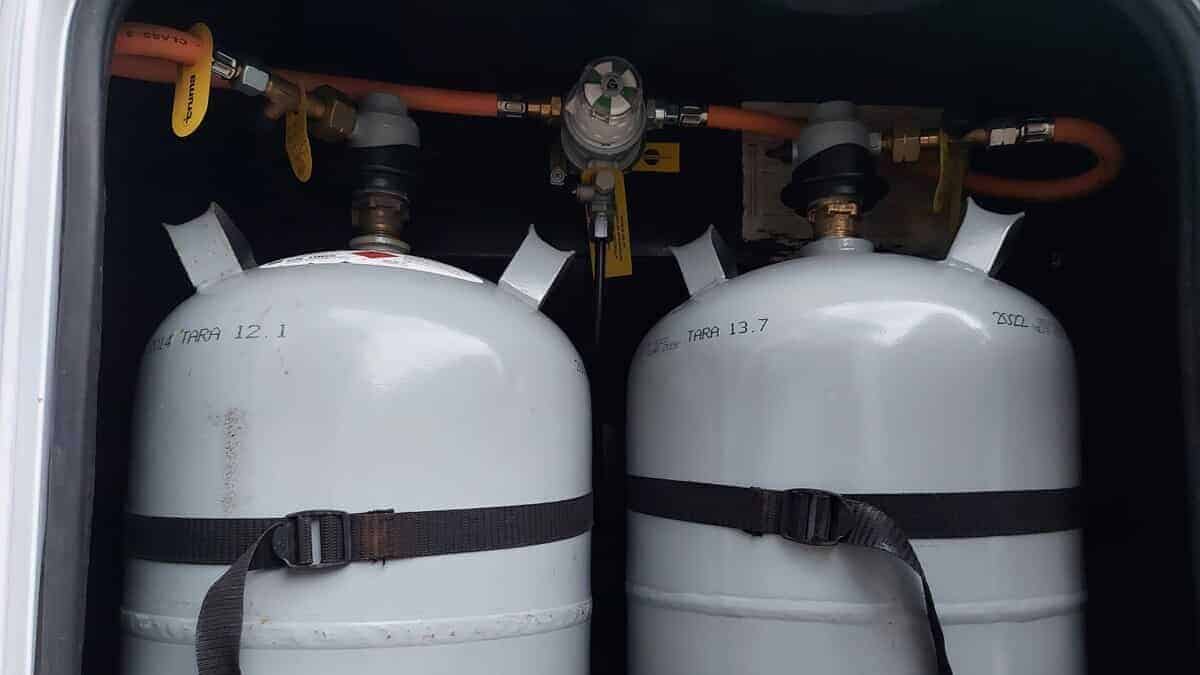
Propane and diesel fuel to your heater usually have a higher rated heat output than electricity. Or if you can run it on two power sources, such as propane and electricity or diesel and electricity, this is even better. Still, only the electric heating is usually insufficient when it gets far below freezing.
3. Space heater in addition:
You may use a space heater in addition to your original heater but not a space heater alone when it is below freezing, as explained above.
4. Insulate windshield:
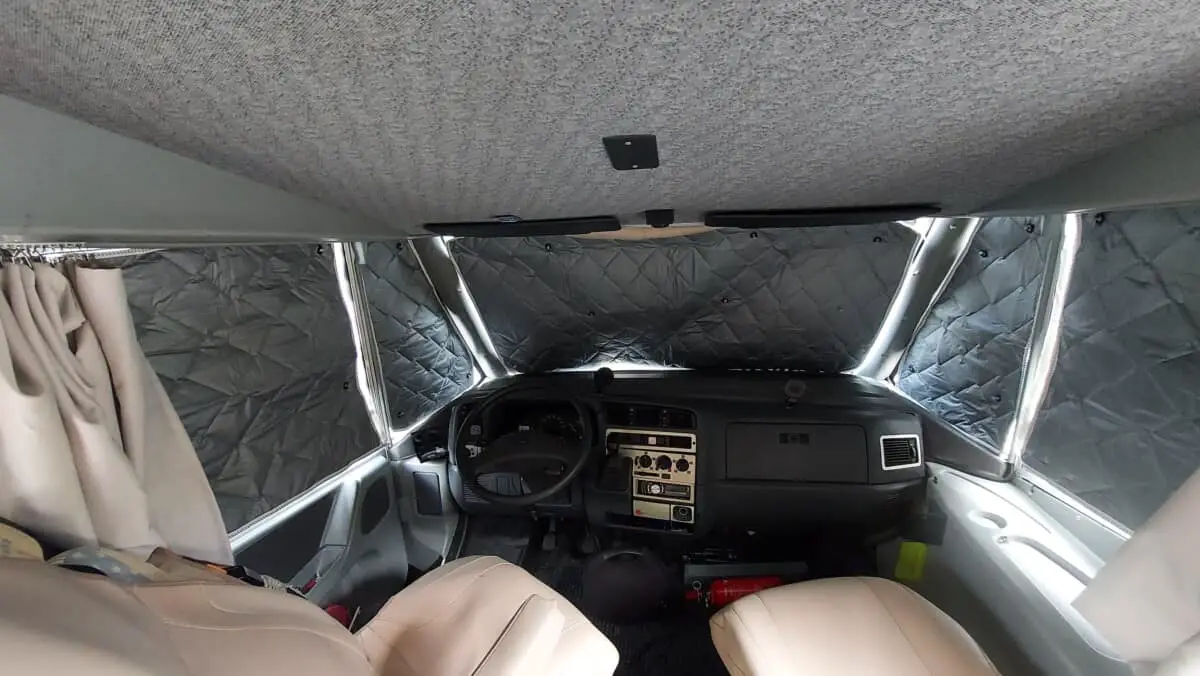
Insulate your windshield using an outside insulation cover, an inside insulation cover, or at least thick curtains hanging around your front windshield since this is the worst insulated area in every motorhome and the easiest way of increasing your comfort and warmth during the winter.
In my other article, I show how I insulate my windshield for the winter and more about the pros and cons of the different ways of insulating the windscreen.
5. Use curtains:
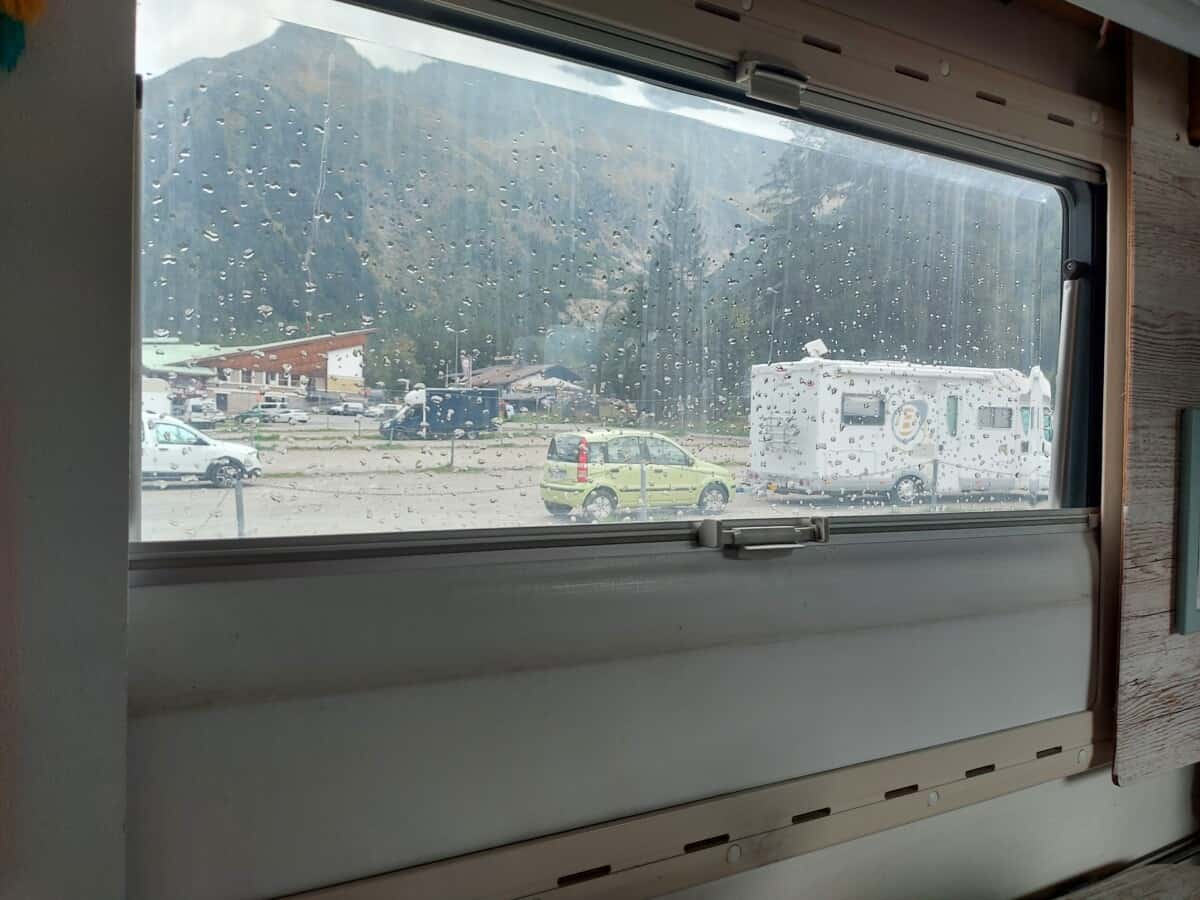
Use your window shades, covers, or curtains at night since these will be another barrier to the cold air. And even though it seems like a small thing, this can help a lot; also, if you fit some extra thick curtains, like blackout curtains, those usually insulate pretty well.
6. Extra insulated floor:
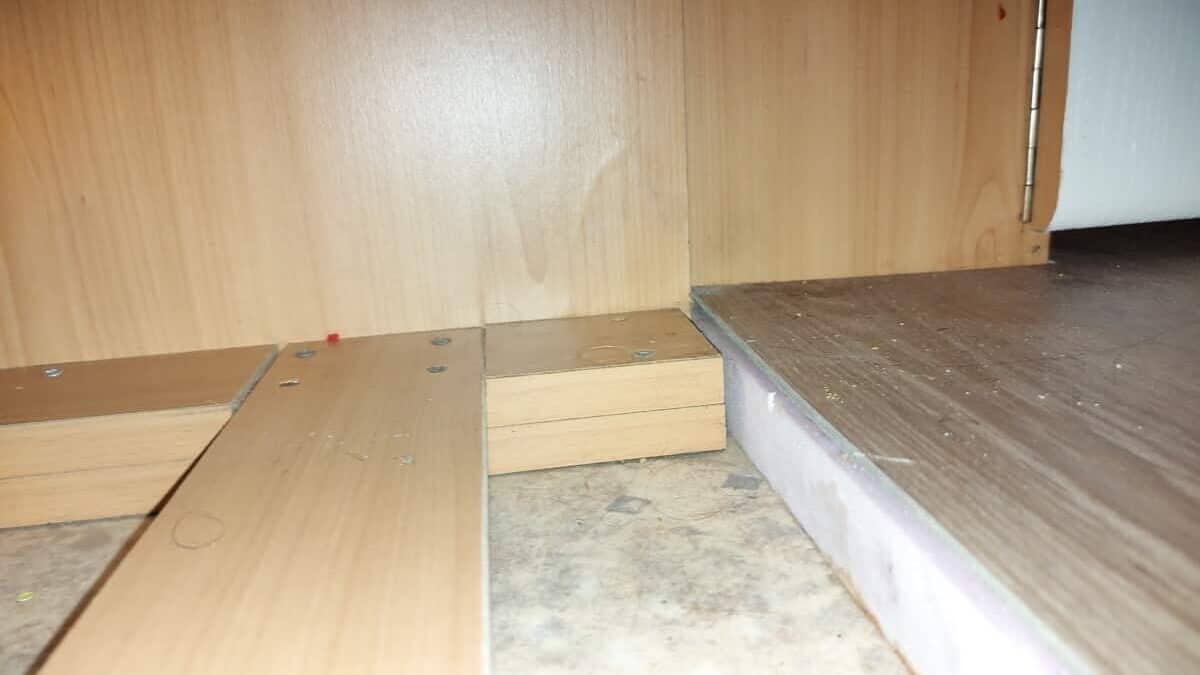
Put on extra insulation on your motorhome, RV, or caravan floor. This is a bit more of a process. Still, if the underside of your vehicle is relatively flat, you can attach XPS foam board insulation to the outside/ underside of your floor to increase insulation drastically.
But wait, aren’t motorhomes already insulated? Yes, they are, but some are pretty poorly insulated, and attaching extra insulation to the floor is the easiest way of increasing the amount of insulation to the structure of your vehicle since it is flat. Also, it doesn’t require you to strip down all the furniture inside just to fit it as it would with your walls or roof.
To learn more about how motorhomes are insulated, what to improve, and when putting extra insulation on the floor is a good idea, check out my other post, where I cover the subject deeper.
7. Use a motorhome, RV, or caravan skirt:
The “skirt” hangs on the outside of your motorhome’s side down to the ground; this helps keep the area underneath your vehicle warmer and avoids cold air constantly entering there.
Some people even spend extra time insulating that area and then put a space heater or run down one of the furnace warm air vents underneath the motorhome to keep an uninsulated grey tank from freezing or try and create a warmer inside floor.
But there are other ways of keeping an uninsulated grey water tank from freezing in the winter, which you can read more about in another article where I share how I kept my uninsulated water tank from freezing during a whole winter, as well as the other popular options.
8. Use the ventilation cover behind your fridge.
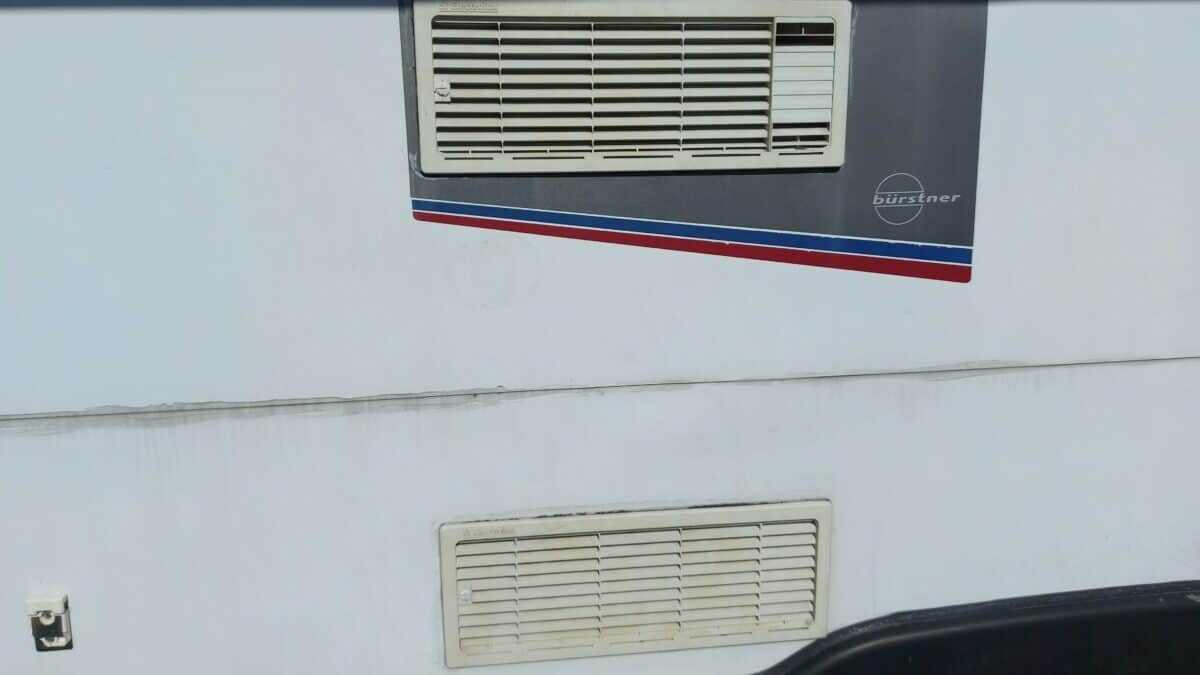
Consult your fridge instruction manual to know at what temperatures you should use the ventilation cover for your absorption fridge. Usually, it is time to fit the ventilation covers when the temperature drops below freezing. But be careful fridges up to 130 L capacity. Also, you usually should not install the top winter cover during gas operation, so double check this in your fridge instruction manual since this can differ.
You usually should not install the top fridge ventilation winter cover during gas operation with fridges up to 130L.
9. Seal drafts
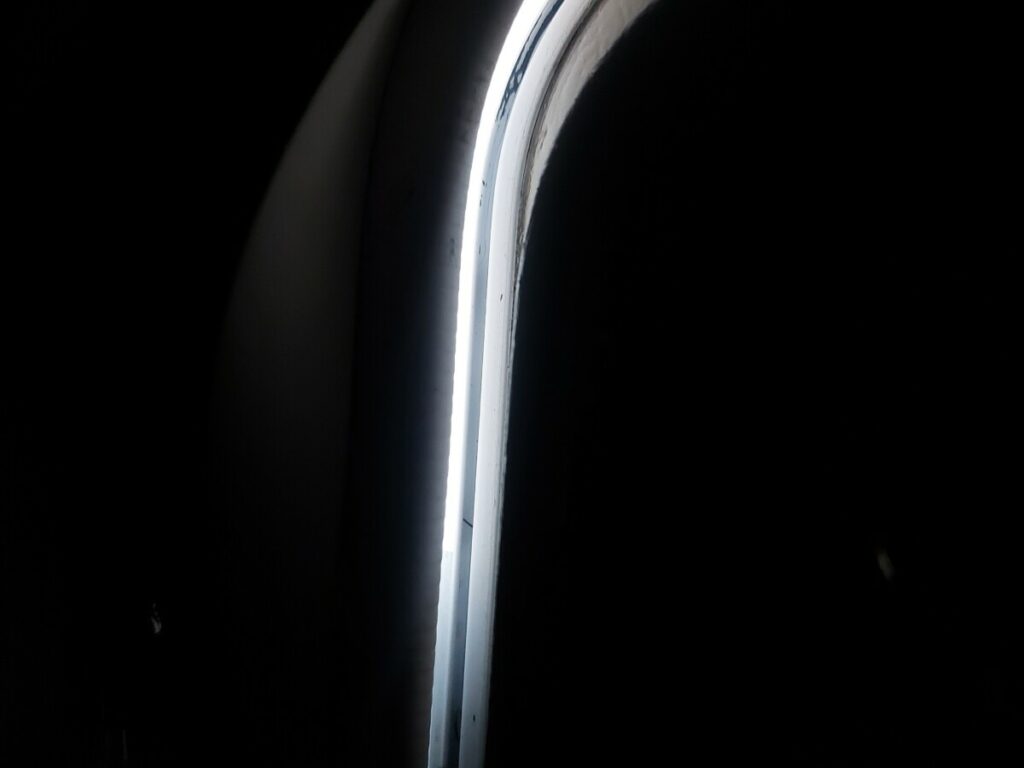
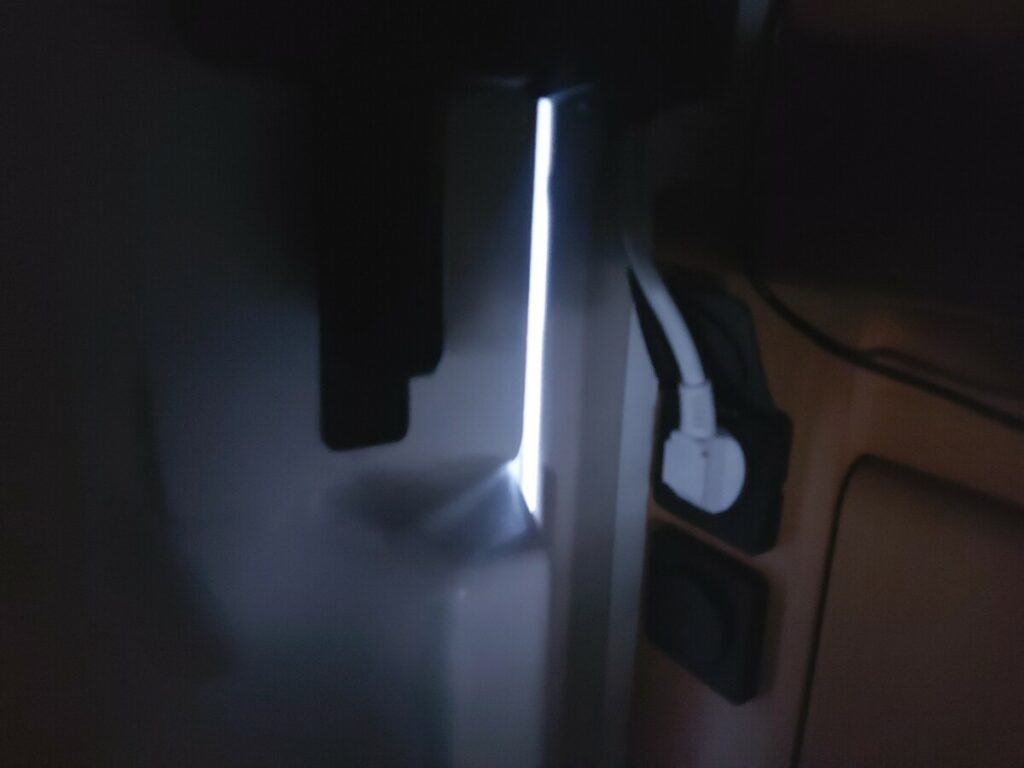
Maybe your door, windows, or other places in your motorhome have holes, and the outside cold could easily slip in. You can easily spot the worst areas you need to seal during the early morning when you have all your shades down and keep it dark inside the motorhome and look for places where the light from the outside slips through. Start by sealing those.
After that, you will notice when it is windy and during the winter, where you have a cold draft coming, and try to figure out what place is causing it and seal it.
BE AWARE not to seal ventilation holes that are meant to be there, some ventilation holes are there to vent out propane in case of a leak to keep you alive!
Usually, there is a big ventilation hole underneath your fridge on the floor that goes straight out; this is one reason why it commonly gets quite drafty from the refrigerator. of course, there are also vast ventilation holes right behind the fridge.

The ventilation hole in the floor is there in case of a propane leak; since propane goes down instead of up because it is heavier than air, it is great to have that ventilation hole there and not seal it. Also, because propane goes down towards the floor in case of a leak, it is also good to keep the gas alarm low.
Propane goes down instead of up because it is heavier than air so keep your gas alarm low!
Can I Leave My RV Furnace ON All Night?
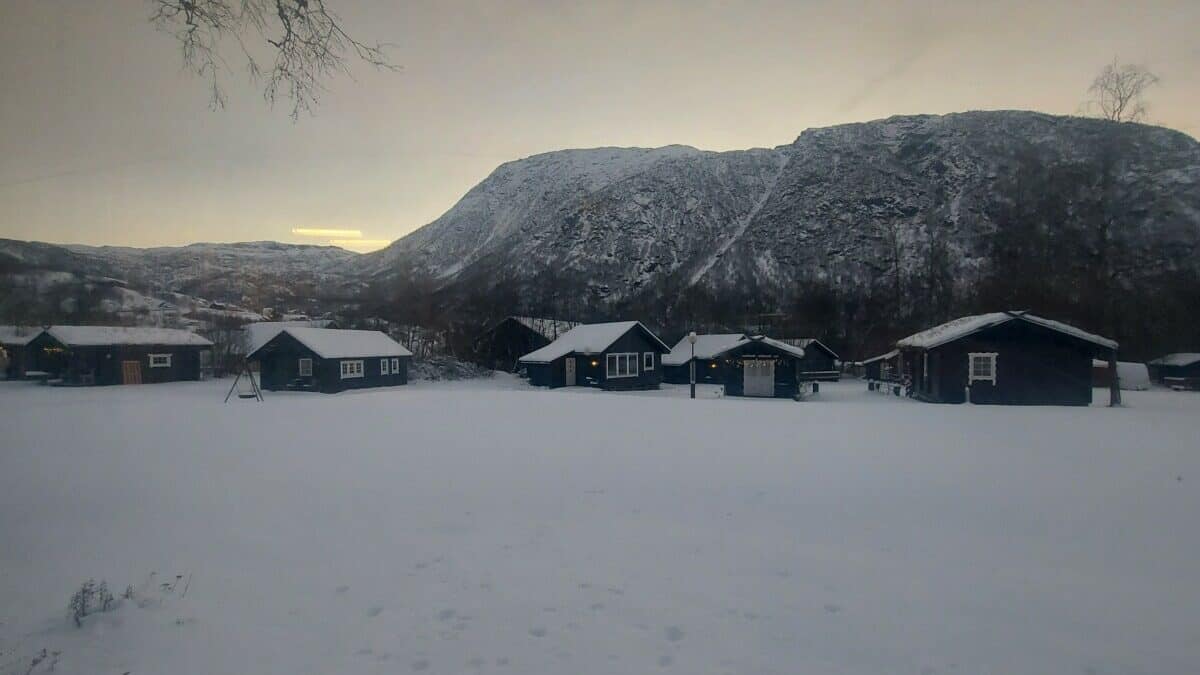
I always leave my motorhome, RV, or caravan furnace/heater on all night. Usually, I turn down the temperature setting a couple of degrees to save propane during the night since I will also be warm under a thick blanket. Although if you run out of propane at night, you will wake up freezing.
I always use my furnace running on propane during cold nights. Still, as I said, I turn the temperature down a couple of degrees since I both sleep better when it is a bit colder, and I can stay warm and cozy underneath a thick blanket instead; this also saves on propane.
For some annoying reason, I have never in my life experienced a propane tank getting empty during the day; it always happens in the middle of the night, and you wake up because your heater has stopped working due to the lack of propane and the temperature inside is freezing, needing to go out to shift bottles.
However, after a couple of short wake-ups like that, I have now installed a duo controller which connects to both my propane bottles, and when one gets empty, it automatically switches over to the whole bottle, so even if one bottle runs out in the middle of the night propane will keep flowing and running the furnace.
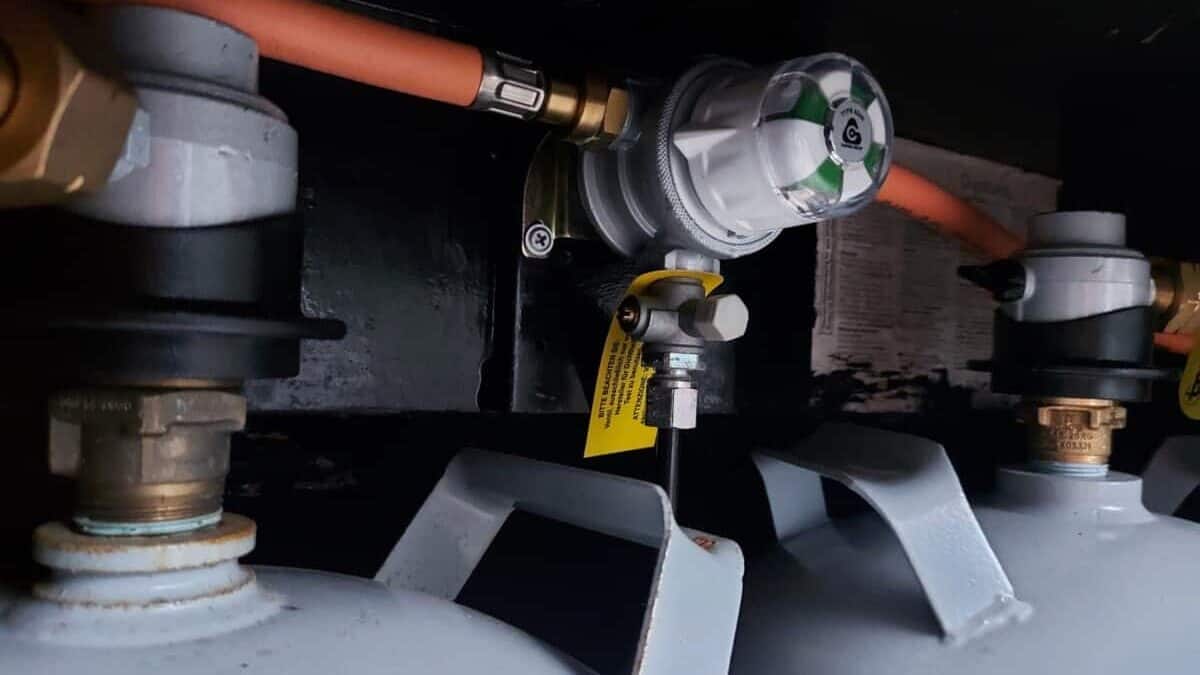
I have now installed a duo controller so i never need to wake up cold in the middle of the night again!
The second propane bottle then gives me a couple of days to refill the other empty one, and I can fill that when it suits me instead of waking up freezing in the night to swap bottles.
So that’s a great way of keeping your propane furnace going the whole night; if you use diesel instead, ensure you have enough fuel in the tank before going to sleep, and you will be fine too.
Suppose your heater stops working in the middle of the night. In that case, you will most likely wake up relatively quickly to change the fuel source, but if you sleep well in the cold, you might not. It could be good to know more about when your water heater could freeze since this could be an expensive mistake to fix.
The water expands when it turns to ice, which could cause the water heater to break, so I recommend checking out my other article, which goes through when a water heater freezes during the winter.
